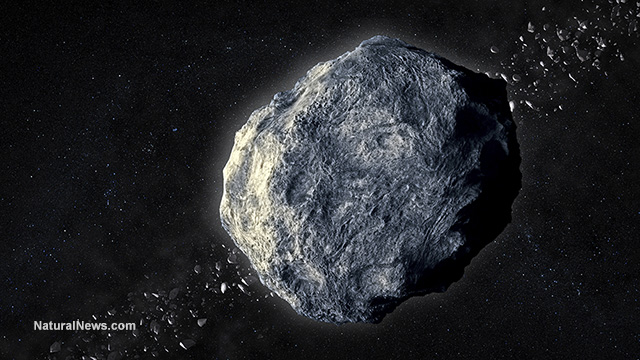2 New minerals discovered inside meteorite that crashed to Earth
12/08/2022 / By Kevin Hughes

Two minerals never seen before were discovered inside a meteorite that crashed into Earth. The meteorite, which weighs 3,000 pounds, was discovered in Somalia back in 2020.
The minerals were found inside a single 2.5-ounce slab of rock taken from the space rock dubbed El Ali. They were named elaliite and elkinstantonite. The first mineral was named after the meteorite, while the second was named after scientist Lindy Elkins-Tanton, an expert on meteors and space rocks.
Elkins-Tanton, the managing director of Arizona State University‘s Interplanetary Initiative, is also the lead researcher of the National Aeronautics and Space Administration’s (NASA) forthcoming Psyche mission that will examine space rocks in the asteroid belt.
According to scientists, El Ali was a kind of IAB complex meteorite, which is a kind of space rock made up of meteoric iron with silicate particles.
“What we’ve now discovered is there are at least two new minerals in this meteorite from Somalia that have never been discovered before,” said Chris Herd, a professor at the University of Alberta in Canada. “Whenever you find a new mineral, it means that the actual geological conditions, the chemistry of the rock, was different than what’s been found before.”
Herd and other scientists unearthed the two new minerals by checking the rock’s chemistry and the ratio of elements that are found inside it. They then crosschecked the minerals with versions that had been earlier combined in a lab.
The two minerals were sent to the University of Arizona for formal classification.
More meteorite samples could yield other new minerals
Herd also said that should the scientists acquire more samples from the meteorite, there is a chance that even more minerals might be discovered.
The researchers plan to use the meteorite to gain a better understanding of how asteroids are formed. (Related: Violent collisions in space millions of years ago led to 100 times more meteorite impacts on Earth and unleashed space dust, studies suggest.)
“That’s my expertise – how you tease out the geologic processes and the geologic history of the asteroid this rock was once a part of. I never thought I’d be involved in describing brand new minerals just by virtue of working on a meteorite,” Herd said.
He also said the recent elements provided interesting prospects for future inventions. “Whenever there’s a new material that’s known, material scientists are interested too because of the potential uses in a wide range of things in society,” Herd remarked.
Herd also defended the decision to name the second mineral from the meteorite after Elkins-Tanton.
“She has done a lot of work on how the cores of planets form, how these iron nickel cores form, and the closest analogue we have are iron meteorites,” Herd said. “So it made sense to name a mineral after her and recognize her contributions to science.”
Follow Space.news for more stories like this.
Watch this video that talks about organic extraterrestrial material found in a meteorite.
This video is from the Evolutionary Energy Arts channel on Brighteon.com.
More related stories:
Ancient “desert glass” turns out to be from a 29-million-year-old meteorite.
So, we’re ALL aliens? New research suggests that DNA molecules were brought to Earth on meteorites.
Baffling new substance discovered deep inside Earth’s core.
Meteorite in Michigan may hold clues to origin of life on Earth.
Sources include:
Submit a correction >>
Tagged Under:
breakthrough, cosmic, discoveries, El Ali, elaliite, elkinstantonite, IAB complex meteorite, Lindy Elkins-Tanton, meteorites, minerals, real investigations, research, Space, space rocks
This article may contain statements that reflect the opinion of the author
RECENT NEWS & ARTICLES
COPYRIGHT © 2017 SPACE TOURISM NEWS




















